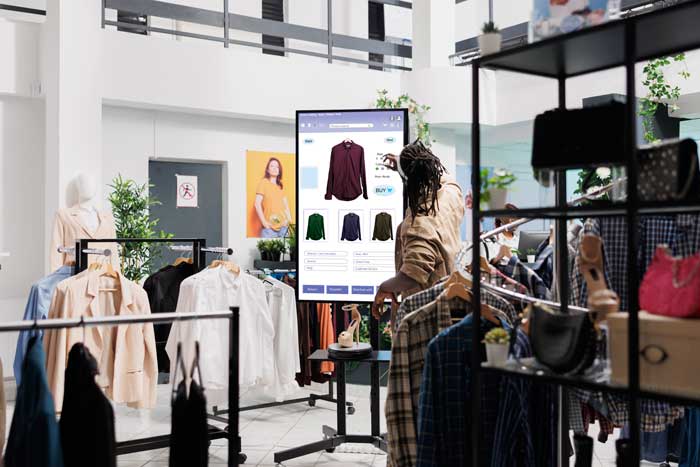
AI weaves innovation into fashion design and manufacturing
In the fashion world with trends changing faster than ever, manufacturers need ways to keep up with these changing times while managing risks, says Ritesh Khandelwal.
AI’s ability to forecast trends with unprecedented accuracy, automate processes, and empower entrepreneurs with better insights gives brands a crucial competitive advantage. This technology is enhancing the industry by making it more personalised for consumers, more streamlined for entrepreneurs, and more democratised for the entire world. The reports suggest the global AI in the fashion market is increasing at a CAGR of 36.9 per cent, from $ 270 million in 2018 to $ 4.4 billion by 2027, showing an increase in the adoption of AI tools in the fashion world.From predicting trends to enhancing customer service and inventory management, AI does everything thereby making the overall process more agile. It tackles long-standing challenges in fashion, including inefficiencies, challenges of overproduction, and the pressure to keep pace with rapidly changing consumer preferences.
Predictive analytics
Let’s understand how AI is revolutionising the fashion industry and redefining it for the future.
Trend forecasting: Trend forecasting in fashion is the capability of AI algorithms to predict future styles, encompassing colours, fabrics, silhouettes, patterns, and designs for future upcoming seasons. Revolutionised it. The process includes a data-driven approach to anticipating fashion trends by analysing data from social media, online retail platforms, fashion shows, and past sales. A key advantage of AI-powered trend forecasting is its real-time capability of analysing changes in customer preferences and finding new patterns in fashion. As new data becomes available, AI can track these trends and continuously update their predictions, allowing brands to stay ahead of the curve and respond swiftly to shifting consumer preferences.
Inventory management: AI has transformed inventory management from a simple tracking system into a sophisticated forecasting and control mechanism. By leveraging AI solutions, brands can minimise the possibility of overstocking and under stocking, removing the risks of dead stock or inadequate inventory. With AI excelling at location-specific demand, brands can maintain sufficient inventories at different locations to optimise sales.
In addition to this, AI solutions can also analyse all internal and external factors impacting the successful planning, stocking, and delivery of inventory. This reduces errors associated with inventory management, helping brands save costs and increase customer satisfaction.
Consumer insights: AI is revolutionising personal style, offering unprecedented customisation in clothing to suit individual tastes and body types while driving futuristic innovations. By analysing consumer behaviour, preferences, and purchasing patterns, AI uncovers key factors influencing various fashion choices. This enables brands to craft more personalised marketing strategies and products to better align with customer expectations. AI’s ability to decode these evolving customer preferences – their likes, needs, and motivations – provides brands with powerful insights to enhance engagement and drive sales.
AI-Driven design: Generative design is an innovative and efficient product development method that leverages advanced algorithms to explore numerous design possibilities and optimise outcomes. This innovative approach empowers designers to push boundaries and refine concepts in the crucial early stages of the design process. It also pushes the creation of high-quality designs at scale, promotes efficiency, and enables the creation of products that are both functional and aesthetically pleasing.
Prototyping: Generative design empowers designers to validate and refine concepts before final production, significantly reducing risks at the manufacturing It can now stimulate the fabric behaviour and garment fit which means designers can test and improve their designs virtually. The combination of AI with VR/AR creates immersive design experiences and virtual try-ons that further enhance prototyping in fashion.

Automation: Automation involves leveraging technology to perform tasks automatically, thereby enhancing efficiency, reducing human error, and cutting down operational costs. In the realm of fashion manufacturing, automation plays a crucial role in streamlining processes and improving productivity. Here are two primary ways automation is utilised.
Automation involves the use of robots to perform repetitive tasks. In fashion manufacturing, it can significantly enhance efficiency in various processes:
- Sewing: Robots can sew garments with precision and speed, ensuring consistent quality and reducing manual labour.
- Cutting fabrics: Automated cutting machines can cut fabrics accurately according to design specifications, minimising waste and increasing efficiency.
- Quality checking: Robots equipped with advanced sensors and vision systems can inspect garments for defects, ensuring that only high-quality products proceed to the next stage of production.
AI and IoT Integration
Artificial Intelligence (AI) works in conjunction with the Internet of Things (IoT) devices to monitor and control machinery, ensuring smooth operations and reducing downtime. This integration facilitates several advanced functionalities:
- Real-Time monitoring: AI and IoT enable real-time monitoring of factory operations. Sensors and connected devices collect data on various parameters, such as machine performance, production rates, environmental conditions etc. enhancing the transparency of business processes.
- Digital twins: A digital twin is a virtual replica of a physical process or system. Creating digital twins of manufacturing processes allows for real-time monitoring and simulation of the entire manufacturing function. By simulating different scenarios, manufacturers can proactively identify potential issues, optimise processes, and perform maintenance tasks before problems arise.
- Predictive maintenance: AI algorithms analyse data from IoT devices to predict equipment failures before they occur. This predictive maintenance approach helps schedule maintenance activities at the most opportune times, minimising downtime and keeping operations running efficiently. By anticipating and addressing potential issues, manufacturers can avoid costly breakdowns and extend the lifespan of their equipment.
In conclusion, AI is revolutionising the fashion industry, enabling companies to operate more efficiently and create more personalised garments that truly resonate with consumers. By leveraging AI, fashion brands can streamline their supply chains, optimise inventory management, and forecast trends with unprecedented accuracy. Brands that use AI will succeed and we’ll see even more amazing things in fashion.
About the author:

Ritesh Khandelwal is the co-founder of ZYOD, a rapidly growing tech enabled fashion manufacturing firm renowned for its comprehensive design-to-delivery services tailored to fashion brands. ZYOD offers an extensive portfolio of the latest styles and trends, catering to the dynamic structures of the fashion industry. Khandelwal is a visionary who sees ZYOD as a pioneering force in fashion and following trends while also prioritizing environmental sustainability.




